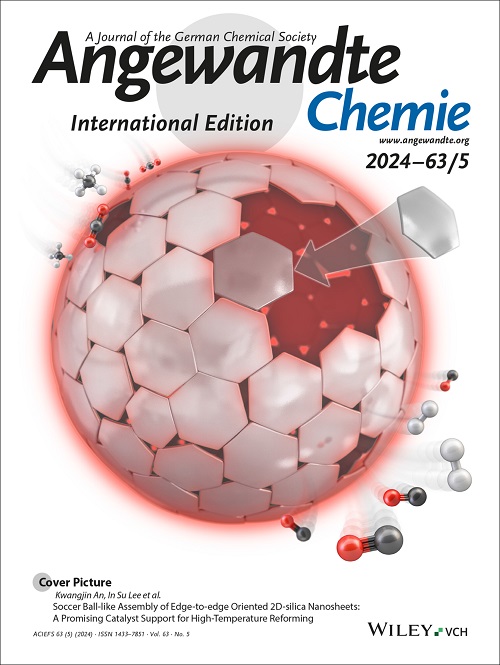基于动态添加剂工程的高可逆锌电池溶剂化和界面多位点协同调节
IF 16.9
1区 化学
Q1 CHEMISTRY, MULTIDISCIPLINARY
引用次数: 0
摘要
用之不竭的添加剂已被报道用于提高锌离子电池(azib)的可逆性。然而,添加剂分子的结构-性能关系仍然难以捉摸,特别是关于多位点配位介导的溶剂化和界面的协同调节。本文利用一系列多羟基添加剂原型,揭示了一种协调溶剂化和界面多位点调节的动态构型重建机制,证明了多官能团分子(mgm)中官能团和链柔韧性的增加有助于提高电池性能。具有折叠构型的MGM在溶剂化壳中参与多位点Zn2+配位,有效地减少活性H2O分子以抑制寄生反应,而其构型转变为直链结构可以在Zn阳极界面上进行多位点平行吸附,从而加速脱溶动力学和转向(002)‐facet主导的Zn沉积。值得注意的是,Zn//Zn电池实现了7000小时的长循环寿命和零下工作温度,而Zn//PANI袋电池在500次循环后保持了近100%的容量保留。这项工作为通过动态增材工程开发高性能电池开辟了一条迷人的道路。本文章由计算机程序翻译,如有差异,请以英文原文为准。
Multisite Cooperative Regulation of Solvation and Interface via Dynamic Additive Engineering for Highly Reversible Zinc Batteries
Inexhaustible additives have been reported to enhance the reversibility of aqueous zinc‐ion batteries (AZIBs). However, the structure–performance relationship of additive molecules remains elusive, particularly regarding multisite coordination‐mediated synergistic regulation of solvation and interface. Herein, a dynamic configuration reconstruction mechanism that orchestrates the multisite regulation of solvation and interface is unveiled by utilizing a series of polyhydroxy additive prototypes, demonstrating that the increase of functional groups and chain flexibility in multifunctional‐group molecules (MGMs) contributes to boosting battery performance. MGM with folded configuration engages in multisite Zn2+ coordination in the solvation shell, effectively minimizing active H2 O molecule to suppress parasitic reactions, while its configuration transition to straight‐chain architecture enables multisite parallel adsorption on Zn anode interface, thus accelerating desolvation kinetics and steering (002)‐facet‐dominated Zn deposition. Remarkably, Zn//Zn cells achieve long cycle life of 7000 h and subzero‐temperature operation, and Zn//PANI pouch cell maintains nearly 100% capacity retention after 500 cycles. This work opens a fascinating avenue for developing high‐performance batteries via dynamic additive engineering.
求助全文
通过发布文献求助,成功后即可免费获取论文全文。
去求助
来源期刊
CiteScore
26.60
自引率
6.60%
发文量
3549
审稿时长
1.5 months
期刊介绍:
Angewandte Chemie, a journal of the German Chemical Society (GDCh), maintains a leading position among scholarly journals in general chemistry with an impressive Impact Factor of 16.6 (2022 Journal Citation Reports, Clarivate, 2023). Published weekly in a reader-friendly format, it features new articles almost every day. Established in 1887, Angewandte Chemie is a prominent chemistry journal, offering a dynamic blend of Review-type articles, Highlights, Communications, and Research Articles on a weekly basis, making it unique in the field.

 求助内容:
求助内容: 应助结果提醒方式:
应助结果提醒方式:


